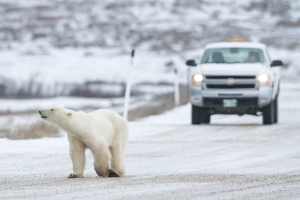It’s estimated that some eight million metric tons of plastic waste enters the global ocean each year. Of that, 640,000 tons is “ghost gear:” abandoned, lost or damaged fishing equipment that sheds microplastics and can kill or seriously injure marine life that becomes entangled in it. And, until recently, concerned fishers and environmentalists have actually been discouraged from cleaning it up.
“[In Canada], it’s been illegal for a long time to bring in anyone else’s gear,” says Bruce Chapman, executive director with the Canadian Association of Prawn Producers (CAPP). “If you come across gear while you’re fishing, you’re obligated to return it to the sea.”
Fisheries and Oceans Canada says the reason for this is because there’s no way to know for sure whether it’s ghost gear. But Chapman says his association’s members are on the water fishing 12 months of the year; they know which gear is abandoned and which isn’t.
“In Newfoundland and the Gulf of St. Lawrence, they have highly seasonal inshore fisheries. Inshore fisherman stop with their fixed gear (traps) in about September or October and then they resume in April or May,” he says. “We pick up a lot of gear during the winter time, so it’s clearly not active gear.”
CAPP has tried for the last 15 years to convince the federal government to allow them to retrieve ghost gear they encounter while out on the water. In May of this year, they finally landed a two-year pilot project to be able to bring in lost or abandoned gear — and not a moment too soon.
Chapman, who has worked in commercial fishing for 40 years, says the amount of ghost gear has increased since he joined the industry, mostly because gear is now made of “essentially indestructible” plastics.
“In the Newfoundland and Labrador area, an individual vessel we operate would have an encounter [with ghost gear] once a month. The encounters would be in even greater numbers off Nova Scotia, which is not part of this pilot project,” he says.
The program operates at no financial cost to DFO, and includes offshore vessels fishing for northern shrimp and Greenland halibut in the 0A/0B (see map) area off the coast of Newfoundland. About 15 vessels are part of the pilot project. If the fishery officer on duty is able to identify the owner of the retrieved gear, the officer will take that gear into their possession. Otherwise, the fishery officer will provide authorization to the vessel operator to dispose of the gear, following local regulations.









